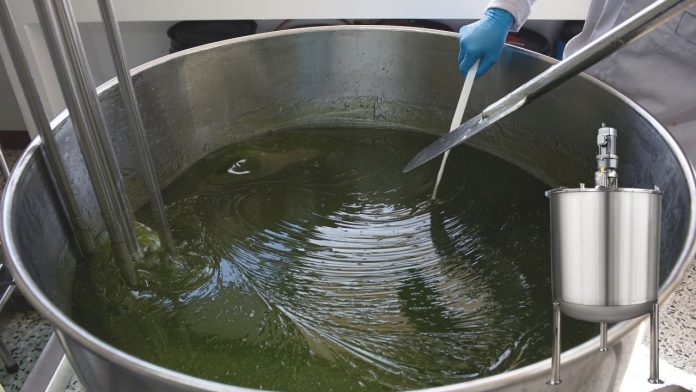Did you know that 70% of industrial chemical processes rely on mixing tanks to achieve product uniformity and operational efficiency?
These robust vessels serve as the unsung heroes of modern manufacturing, enabling everything from life-saving pharmaceuticals to high-performance polymers. With the global chemical processing market projected to reach $7.1 trillion by 2028 (Grand View Research), the demand for precision-engineered mixing tanks has never been higher.
This article dives into how these industrial workhorses drive innovation, safety, and scalability in chemical production, shaping industries that touch nearly every aspect of daily life.
Design and Construction
Process requirements determine the exact engineering of mixing tanks. Stainless steel and carbon steel, together with specialized alloys, form the structure of mixing tanks because these materials deliver corrosion resistance and chemical protection.
The mixing tank design features baffles together with agitators and temperature management systems to achieve optimized performance.
Careful attention goes into designing the tank shape because height-to-diameter ratios and bottom contours influence how well mixtures blend. The majority of tanks utilize cylindrical structures, which include three main bottom types: flat surfaces, conical bases, and dish-shaped bases, depending on application needs.
Key Applications of Mixing Tanks in Chemical Processing
The chemical processing sector and manufacturing operations use mixing tanks substantially because of their essential role in the industry. These are the main applications which mixing tanks serve:
1. Homogenization of Chemicals
The successful production of chemical substances depends heavily on mixing uniformity. The blending process in mixing tanks creates a uniform mixture of raw materials and additives together with solvents to produce consistent products. The pharmaceutical sector particularly needs exact mixing because small inconsistencies can impact drug effectiveness.
2. Reaction Vessels
Chemical reactions need temperature precision, together with exact pressure management and predefined mixing speed conditions. Industrial mixing tanks combine advanced controls with agitators to serve as reaction vessels that enable polymerization as well as neutralization and crystallization processes.
3. Dilution and Dissolution
Mixing tanks exist as processing units that help dissolve solids into liquids and dilute concentration levels of solutions. The production of cleaning agents and fertilizers benefits from mixing tanks that dissolve particles uniformly throughout solutions.
4. Suspension and Emulsification
Industrial mixing tanks enable the production of suspensions and emulsions along with other products through their use in cosmetics and food processing applications. Uniform mixing of lotions, creams, and sauces depends on this process.
5. Temperature Control
Chemical production methods require accurate temperature management systems. The mixing tanks contain temperature control systems through heating or cooling jackets, which control the reaction environment for optimal results.
Benefits of Mixing Tanks in Chemical Manufacturing
Mixing tanks contribute to chemical processing efficiency through various advantages, which lead to higher quality outcomes.
1. Consistency and Quality Control
Each product batch maintained by mixing tanks achieves identical high-quality standards. Efficacy and safety both depend on consistency in the pharmaceutical and food processing industries.
2. Scalability
Manufacturers can obtain mixing tanks that range from laboratory laboratories to big industrial equipment in various dimensions. Manufacturers benefit from expanding their production capacity because mixing tanks maintain consistent quality throughout the process.
3. Versatility
With customizable features like agitator types, tank materials, and temperature controls, mixing tanks can be tailored to suit specific processes and materials, while additional modifications such as specialized coatings and advanced monitoring systems further enhance their adaptability across industries.
4. Efficiency
Automated mixing tanks reduce the need for manual labor, speeding up production and minimizing human error. This leads to faster turnaround times and lower operational costs, while integrated quality control systems ensure consistent product quality and optimize resource utilization throughout the manufacturing process.
5. Safety
The design of mixing tanks includes safety mechanisms, which include pressure relief valves and leak-proof seals combined with resistant materials against corrosion. The design features of mixing tanks protect against accidents and maintain compliance with industry regulations.
Maintenance and Safety Considerations
Through regular maintenance practices, mixing tanks achieve reliable performance and increase their equipment durability. The testing process requires inspection of all seals as well as bearings and agitation components before implementing cleaning and sanitization procedures.
Various safety systems, including pressure relief components, emergency stop mechanisms, and ventilating facilities, protect personnel from harm and accidents. The implementation of standard operating procedures should detail the potential dangers that emerge from chemical handling and processing activities.
Conclusion
Mixing tanks serve as vital components throughout contemporary chemical processing and manufacturing operations. Proper maintenance routine choice and execution directly affect end-product quality and production efficiency. Modern vessels continue to advance through technological developments, which result in new performance-enhancing features and variability improvements.










